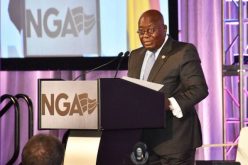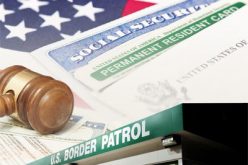The Telegraph – Ernest Withers, who died in 2007 at the age of 85, took some of the most famous pictures of Dr King, including him riding one of the first desegregated buses in Montgomery, Alabama.
Known as the “original civil rights photographer,” he also captured thousands of images chronicling lives of every day struggle in the Deep South, along with demonstrations, riots and criminal trials.
One of his most important photographs was taken in 1968 during the Memphis Sanitation Workers Strike when a crowd stood with placards reading “I Am a Man”.
On April 4 that year Dr King was assassinated on the balcony of room 306 at the Lorraine Motel in Memphis, and Withers was in the room shortly afterwards.
Such was his standing that photographer Joseph Louw, who took a picture on the balcony moments after the shooting, went to Withers who developed the image in his dark room.
But, unknown to Dr King and other civil rights leaders, Withers was also passing photographs of them, their biographical details, summaries of their political beliefs, and even their car licence plate numbers to the government.
He informed on pastors and political candidates, and alerted the FBI to planned demonstrations. Some of his information helped to disrupt a Memphis militant group called The Invaders in the late 1960s.
The tip-offs were so detailed they included information on a teacher who had lent a car to a suspected militant, and how cigarettes were being brought to activists in jail. He even provided pictures of priests who were suspected of supporting striking black workers.
The day before Dr King’s death Withers had been taking photographs of him, but he had also been telling the FBI about a meeting of suspected black militants.
The photographer was also at Dr King’s funeral where he discovered information, passed on to the FBI, that two men blamed for a previous riot were planning a return to Memphis.
Withers’ FBI role was revealed by a two-year investigation by Memphis newspaper The Commercial Appeal, who obtained some of his files under the Freedom of Information Act.
The FBI refused to release his entire file but did disclose 369 pages of documents in which Withers was mostly referred to by his informant code number ME 338-R.
However, an apparent clerical error meant that his name was also included, allowing the true identity of ME 338-R to be established.
The FBI, which normally closely guards the identities of informants, later said it was investigating how the mistake had occurred.
Historians of the civil rights movement described the unmasking of Withers as a shocking betrayal and an illustration of how far J Edgar Hoover’s FBI was prepared to go to infiltrate it.
Withers, a former police officer, who also served in the Pacific in the Second World War, passed his tip-offs to two agents called Howell Lowe and William H Lawrence.
He had eight children and there was speculation that his motives were financial.
Rosalind Withers, one of his daughters, rejected the disclosure, and said: “My father’s not here to defend himself. That is a very, very strong, strong accusation.” But Andrew Young, 78, the Georgia politician and pastor who was a friend of Dr King, was forgiving.
“I always liked him because he was a good photographer,” he told the newspaper. “I don’t think Dr King would have minded him making a little money on the side.”
Athan Theoharis, a historian at Marquette University, Wisconsin, and author of a book on the FBI, said: “It is an amazing betrayal. It really speaks to the degree that the FBI was able to engage individuals within the civil rights movement. This man was so well trusted.”
Story Published in The Telegraph September 2010











